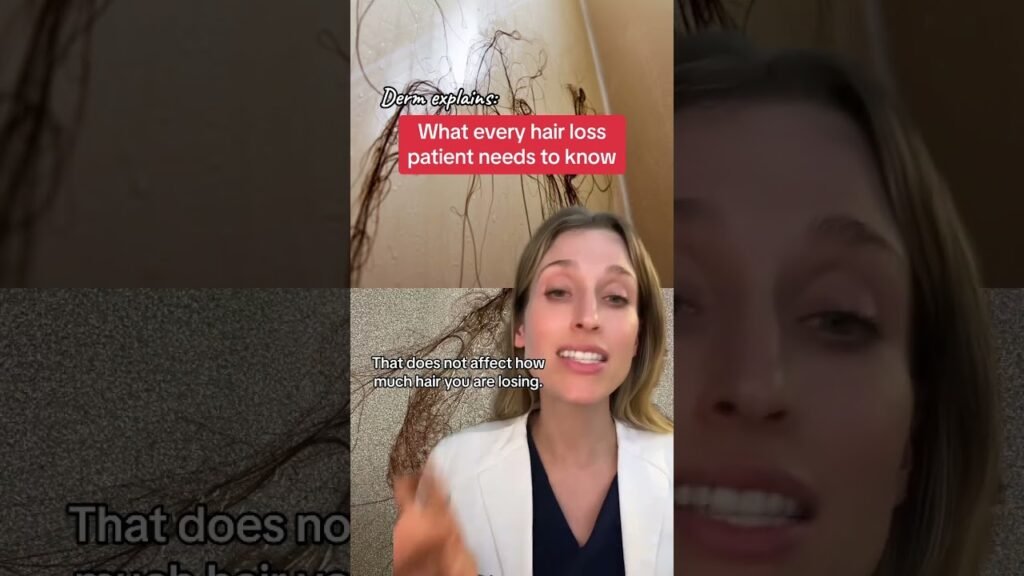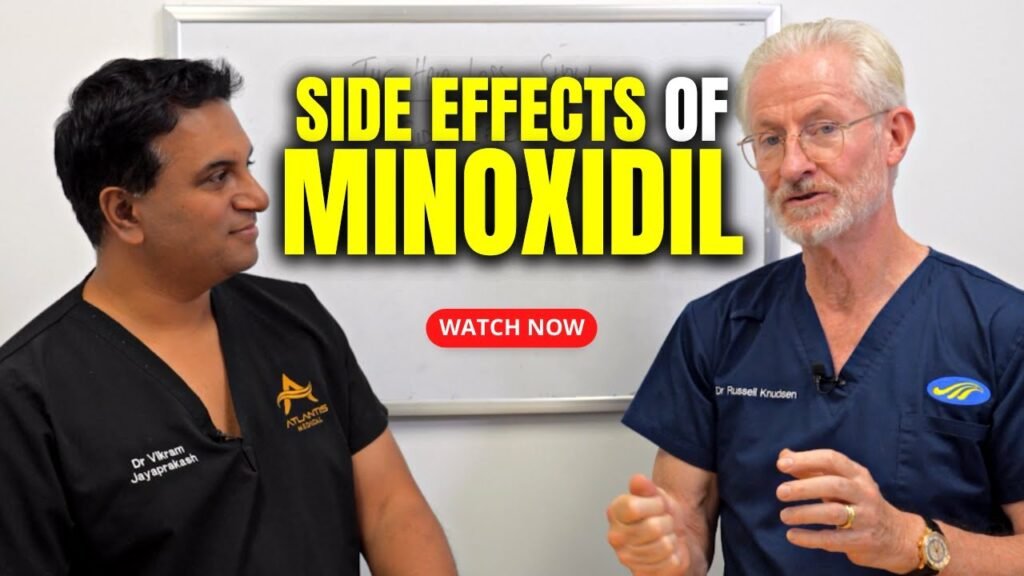Understanding the Mechanism: Does Minoxidil Cause Hair Shedding?
Minoxidil is a widely recognized treatment for hair loss, but its effects can sometimes be misunderstood, particularly when it comes to the phenomenon of hair shedding. When first using Minoxidil, some individuals experience increased hair shedding, which can be alarming. However, this shedding is often a normal part of the hair growth cycle and a sign that the treatment is beginning to work. The initial shedding phase is generally temporary and occurs as old hairs are pushed out to make way for new, stronger strands. This is part of the anagen phase, where hair follicles are stimulated to enter the growth cycle more vigorously.
Why Does Hair Shedding Occur with Minoxidil?
The shedding associated with Minoxidil is linked to its mechanism of action on hair follicles. Minoxidil works by increasing blood flow to the scalp, which delivers more oxygen and nutrients to the hair follicles. This stimulation can cause hair follicles that were in the resting (telogen) phase to shed their hairs, allowing them to re-enter the growth (anagen) phase sooner. As a result, users might notice an increase in hair shedding during the initial weeks of treatment. This phase is temporary, and with consistent use, the shedding typically subsides as the new hair growth becomes more apparent.
How Long Does the Shedding Phase Last?
The duration of the shedding phase can vary among individuals but generally lasts a few weeks to a couple of months. Its important to note that not everyone will experience noticeable shedding, and the extent can differ based on individual hair growth cycles and response to the treatment. Consistency is key; discontinuing Minoxidil during this phase may lead to the cessation of potential benefits. For those concerned about the shedding, consulting a healthcare professional can provide reassurance and guidance tailored to personal needs. Understanding this mechanism can help users remain patient and committed to the treatment, leading to better outcomes in the long run.
Identifying the Early Signs of Hair Shedding with Minoxidil
Understanding the early signs of hair shedding when using Minoxidil can help users manage their expectations and track their progress effectively. Hair shedding is a common occurrence during the initial stages of Minoxidil treatment and can be a sign that the product is working. In the first few weeks, its normal to notice an increase in hair fall. This happens because Minoxidil stimulates the hair follicles, causing them to shed old hairs and enter a new growth phase. Recognizing this phase is crucial for users to continue their treatment without unnecessary alarm.
Recognizing Temporary Shedding
Temporary shedding is often one of the first signs that Minoxidil is taking effect. During this period, users might observe an increase in the number of hairs lost during daily activities such as brushing or showering. This initial shedding phase typically lasts for a few weeks and is a natural part of the hair growth cycle triggered by Minoxidil. Its essential to differentiate this from regular hair loss by noting any patterns or changes in hair density. Consistent shedding that doesnt stabilize after a few months may require consultation with a healthcare professional.
Monitoring Changes in Hair Texture and Density
Another early sign to watch for is changes in hair texture and density. As Minoxidil starts to work, users might experience a noticeable difference in the thickness and quality of their hair. New hair growth might appear finer and softer initially, which can be mistaken for thinning. However, this is often a precursor to stronger and more robust hair growth. Keeping track of these changes can help users understand the effectiveness of Minoxidil and set realistic expectations for their hair restoration journey. Regularly documenting hair progress through photographs can be an effective way to observe subtle improvements over time.
How Long Does Hair Shedding Last When Using Minoxidil?
When you start using Minoxidil, a common question is how long the initial hair shedding phase lasts. Typically, users may experience an increase in hair shedding for the first few weeks. This phase usually lasts around two to six weeks. Its important to note that this shedding is a natural part of the hair growth cycle and indicates that the Minoxidil is beginning to work by pushing out older hairs to make way for new, healthier growth.
Understanding the Shedding Process
During the shedding phase, Minoxidil accelerates the hair cycle, moving hairs from the resting phase (telogen) to the growth phase (anagen). As a result, you may notice more hair falling out than usual. This process is temporary, and shedding should subside after the initial two to six-week period. Its crucial to continue using the product consistently, as stopping may disrupt the hair growth cycle and lead to less effective results.
Factors Influencing Shedding Duration
Several factors can influence how long hair shedding lasts when using Minoxidil. Individual differences such as hair type, the extent of hair loss, and adherence to the treatment regimen can all play a role. Additionally, the concentration of Minoxidil used (2% or 5%) might affect the shedding duration. Generally, users who maintain regular application and follow recommended guidelines are more likely to experience optimal results with minimal disruption.
Minoxidil Shedding vs. Natural Hair Loss: Key Differences
When diving into the world of hair restoration and treatments, understanding the difference between Minoxidil shedding and natural hair loss is crucial. Minoxidil, a popular over-the-counter treatment for hair loss, is known for its unique shedding phase, which often confuses users. This shedding is a temporary phase where the hair follicles push out the older hair to make way for newer, healthier strands. In contrast, natural hair loss, also known as androgenetic alopecia, occurs due to genetic factors and hormonal changes, leading to a gradual thinning of hair over time.
One of the key differences lies in the duration and pattern of hair loss. Minoxidil shedding typically occurs a few weeks after starting the treatment and lasts for a short period, usually a few weeks to a couple of months. During this phase, users may notice an increased amount of hair fall, which can be alarming but is generally a sign that the treatment is working. On the other hand, natural hair loss is a continuous process that can persist for years if left untreated, often resulting in noticeable bald patches or a receding hairline.
Another significant difference is the underlying cause of hair loss. Minoxidil shedding is a direct result of the medication stimulating the hair follicles, causing them to cycle through the growth phases more rapidly. This accelerated cycle is what leads to the initial shedding. In contrast, natural hair loss is primarily driven by genetic predispositions and hormonal imbalances, particularly involving dihydrotestosterone (DHT), which shrinks hair follicles and shortens the growth phase, leading to thinner and weaker hair over time. Understanding these differences can help individuals make informed decisions about their hair loss treatments and set realistic expectations for their hair restoration journey.
Effective Strategies to Manage Hair Shedding Caused by Minoxidil
Experiencing hair shedding when using Minoxidil is a common occurrence, often causing concern for many users. This phenomenon, known as «Minoxidil shedding,» is usually a temporary phase that indicates the product is working. However, managing this shedding effectively can help minimize stress and maintain a healthy hair routine. One of the primary strategies is to maintain consistency in your Minoxidil application. Applying the product as directed, usually twice a day, helps to ensure that your hair follicles are continuously stimulated, which can eventually lead to a reduction in shedding over time.
Another effective approach is to integrate a nourishing hair care routine alongside your Minoxidil treatment. Using a gentle, sulfate-free shampoo and a nourishing conditioner can help strengthen the hair shaft and reduce breakage. Additionally, incorporating products that contain biotin, keratin, or other hair-strengthening ingredients can provide extra support to your hair during this shedding phase. Regular scalp massages can also promote blood circulation, potentially enhancing the effectiveness of Minoxidil by delivering more nutrients to the hair follicles.
Moreover, paying attention to your diet and lifestyle can play a crucial role in managing hair shedding. Ensuring a balanced diet rich in vitamins and minerals such as zinc, iron, and vitamin D can support overall hair health. Stress management techniques, like yoga or meditation, can also be beneficial, as stress is known to exacerbate hair shedding. By combining these lifestyle adjustments with consistent Minoxidil use, you can effectively navigate the shedding phase and promote healthier hair growth.


